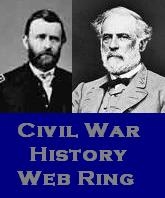 |
| Major John Pelham C.S.A. |
About Me

- Jim Rosebrock
- I am a lifelong student of military history with particular interest in the Battle of Antietam. I work for the federal government in Washington DC and have two young adult children who I love very much. I currently volunteer at Antietam and devote much time to the study of this battle and the Maryland Campaign. I enjoy collecting notable contemporary quotations by and about the men of Antietam. Since 2013 I have been conducting in depth research on the regular artillery companies of the Union Army and their leaders. I hope to turn this into a book on this subject in the future. My perspective comes from a 28-year career in the U.S. Army. Travels took me to World War II battlefields in Europe and the Pacific where American valor ended the tyranny of Nazism and Empire. But our country faced its own greatest challenge 80 years earlier during the Civil War. And it was the critical late summer of 1862, when Robert E. Lee launched the Maryland Campaign. It is an incredible story of drama, carnage, bravery, and missed opportunities that culminated around the fields and woodlots of peaceful Sharpsburg MD. So join me as I make this journey South from the North Woods.
Tuesday, March 20, 2012
The Perfect Lion
Monday, April 18, 2011
A New Book on the Battle of Antietam

Last week, the Western Maryland Interpretive Association (WMIA) published the latest in its series of books on various aspects of the Civil War in this part of Maryland. Already released are volumes on the Battle of Monocacy, and the Antietam Farmsteads. Joining these titles is the Battle of Antietam September 17, 1862.
The latest work is a collaborative work of two Antietam rangers. John Hoptak wrote the copy for the book. Keith Snyder designed the layout, maps, and charts and masterfully enhanced the photographs and drawings that grace the book.
The book is more than just a tale of the bloody events of September 17, 1862 as the title would have you believe. It is the story of the entire Maryland Campaign told from its very beginnings on September 4, 1862 when the seemingly invincible legions of the Army of the Northern Virginia crossed the Potomac, to the retreat of the battered Confederate Army and the rearguard Battle of Shepherdstown fifteen days later.
John Hoptak has already established his reputation as an authority and well-regarded author on a range of Civil War topics. His challenge here was to reduce the Maryland Campaign and the Battle of Antietam to about 60 pages of text. The remaining 20 or so pages are the excellent maps, charts, and photos.
The result is a well-crafted overview of the campaign and a more detailed survey of the battle on September 17th, 1862. The Battle of South Mountain and Confederate capture of Harper’s Ferry as well as the events of the two days leading up to the battle are addressed. John’s treatment of George McClellan is fair and balanced and thankfully devoid of much of the stereotype that we see in much of the literature of this important figure. Likewise we see the battle from the perspective of Robert E. Lee and understand his decision to stand and fight outnumbered and with his back to the Potomac.
John covers the battle in about 30 pages. We see it not as a series of unrelated events on different parts of the battlefield as it is sometimes portrayed but as a seamless weaving together of the story with a good appreciation of how it all tied in together. Lesser-known parts of the battle are included, like Lee’s planned attack in the left in the afternoon, and the September 16 twilight action in the East Woods.
Given John’s penchant for biography, we are treated to brief vignettes of the principal commanders on both sides throughout the narrative.
Keith Snyder did a tremendous job with the maps. There are six for the battle itself covering different times of the battle. The maps really enforce the fact that there was action along the entire line for the entire day. They capture key elements of terrain, contour, and movement in a way that I haven’t seen before. I have already photocopied and laminated copies and stuck them in my already bulging guide haversack. Keith created several great organization charts that distill a great amount of information; he did a wonderful job touching up the photographs and drawings providing a new level of crispness and clarity to images many of us have seen in other works. There is also interesting information on the development of the park, presidential visits to the battlefield, and much more.
Without hopefully sounding to pompous, I cannot say that there was much new that I learned about the Battle of Antietam here. But the story is faithfully and accurately told. John and Keith have reduced an immensely complicated event in our history into a readable and informative work that should have widespread appeal and excite interest in new readers young and old on the topic. They got it right.
In the days and months ahead as I take groups out on tours I will as I sometimes do, find myself at a loss for words on how to reduce a complicated concept or event to an easier to understand level. When that happens I will reach for my copy of this very good book.







